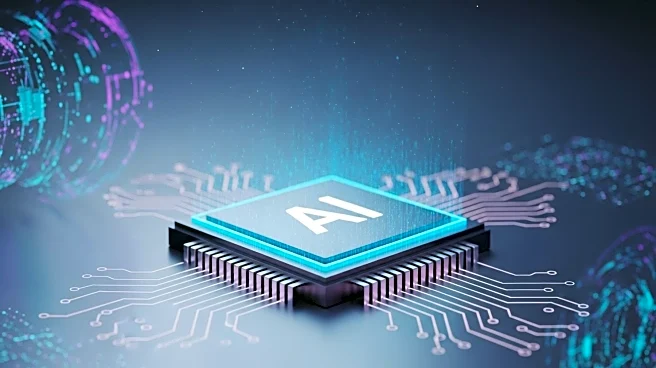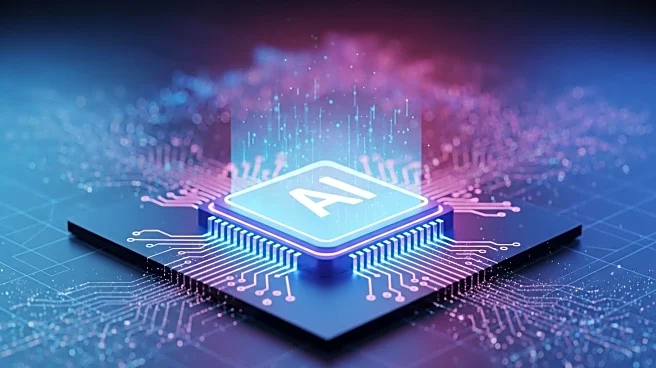What is the story about?
What's Happening?
Silicon Valley is experiencing a surge in investments in artificial intelligence, reminiscent of the dot-com bubble of the late 1990s. Tech firms are spending hundreds of billions on advanced chips and data centers to accommodate the growing use of AI technologies like chatbots. Despite the enthusiasm, there are warnings of a speculative bubble, with concerns about the sustainability of such investments. OpenAI's ambitious $500-billion AI infrastructure plan has raised eyebrows, and other tech giants like Meta are also investing heavily in AI infrastructure. The financing for these projects is coming from venture capital, debt, and unconventional arrangements, raising questions about the long-term viability of these investments.
Why It's Important?
The potential AI bubble poses significant risks to the tech industry and investors. While AI has the potential to transform industries and accelerate human progress, the rapid influx of capital into unproven technologies could lead to financial instability. Companies may feel pressured to keep pace with rivals' investments, risking being out-scaled and sidelined in the future AI marketplace. The parallels to the dot-com bubble highlight the need for caution and strategic planning to avoid a similar crash. The outcome of these investments will have far-reaching implications for the tech industry and the broader economy.
What's Next?
As the AI industry continues to grow, companies will need to demonstrate the profitability and sustainability of their investments. The reliance on debt financing and unconventional arrangements may lead to increased scrutiny from investors and regulators. The industry must navigate the challenges of scaling AI infrastructure while ensuring a return on investment. The potential for a bubble burst could prompt a reevaluation of investment strategies and a focus on more sustainable growth models.
Beyond the Headlines
The AI boom raises ethical and cultural questions about the shift from human-driven economic activity to machine-driven processes. The massive infrastructure build-out and high valuations reflect the industry's optimism, but also the risks of overvaluation and capital destruction. The comparison to the dot-com era underscores the need for responsible investment practices and the importance of balancing innovation with financial stability.
AI Generated Content
Do you find this article useful?













